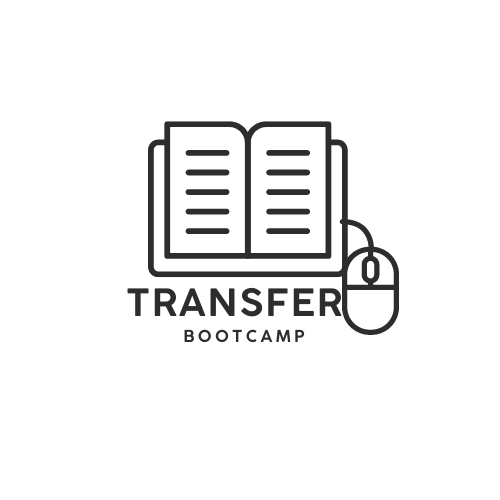Exploring Virtual Field Trips
In the evolving landscape of education, virtual field trip platforms have emerged as powerful tools. They offer a dynamic approach to learning, allowing you to bring the world into your classroom or digital education space with just a few clicks. Let’s delve into the advantages and educational impacts of these innovative platforms.
Benefits of Virtual Field Trips
One of the primary advantages of virtual field trips is their cost-effectiveness. They remove the financial burden of traditional field trips, making enriching experiences accessible to a wider range of students. Without the need for transportation, accommodation, or additional staffing, you save on expenses and overcome logistical challenges (RexTheme).
Another significant benefit is the accessibility they provide. Virtual field trips ensure that students with mobility restrictions, those who are immunocompromised, or located in remote areas can participate in educational experiences that would otherwise be out of reach. This inclusivity means that there are fewer empty seats in the virtual classroom, and every student has the opportunity to engage with the material.
Furthermore, virtual field trips often include interactions with subject matter experts. Through pre-recorded content or live video conferencing, students can engage in real-time discussions and interviews, which deepens their understanding and makes the experience more memorable.
Virtual field trips also stand out as a resilient and adaptable educational tool, especially during times when traditional field trips are not feasible. They ensure continuity in learning experiences, regardless of external circumstances, and can help future-proof education.
Lastly, they offer a seamless way to explore destinations across the globe, including historical sites and natural wonders, without the need for fundraising or permission slips, making them a game-changer for educational institutions (We Are Teachers).
Educational Impact of Virtual Field Trips
The educational impact of virtual field trips is significant. By integrating these experiences into your curriculum through learning management systems (LMS) or mobile learning apps, you can create an immersive learning environment that stimulates students’ curiosity and fosters a deeper understanding of the subject matter.
Virtual field trips can complement classroom instruction, providing visual and interactive elements that textbooks alone cannot offer. They can enhance a student’s grasp of complex topics by providing a realistic view of the subject that is being taught, whether it’s a historical event, a scientific process, or cultural exploration.
The use of virtual field trip platforms can also align with various educational technologies, such as augmented reality (AR) and virtual reality (VR), to create even more engaging experiences. These technologies can simulate real-life environments, allowing students to learn by doing, which can lead to better retention of information and a more enjoyable learning process.
In conclusion, virtual field trip platforms are reshaping the way educational content is delivered and experienced. They are enhancing accessibility, engagement, and the effectiveness of learning in a world that increasingly values digital solutions. As an educator or e-learning professional, incorporating these platforms into your teaching toolkit can open up a world of possibilities for your students’ learning journeys.
Implementing Virtual Field Trips
The integration of virtual field trip platforms into educational curricula can transform the learning experience. As an educator, corporate trainer, or instructional designer, your role in planning and engaging students in these virtual journeys is critical. Let’s explore how you can effectively implement virtual field trips for your learners.
Planning Virtual Field Trips
Your planning process is key to the success of a virtual field trip. Here’s a step-by-step guide to help you prepare an enriching virtual experience:
-
Identify Learning Objectives: Determine what you want your students to learn from the virtual field trip. Align these objectives with academic standards or training competencies to ensure relevancy (AVID Open Access).
-
Select Suitable Platforms: Choose from a variety of platforms like Google Earth, National Geographic Explorer, or virtual museum tours that best fit your learning objectives and offer comprehensive learning experiences.
-
Design Pre- and Post-Activities: Create activities that frame the virtual field trip with context and follow-up discussions or assignments. Consider using KWL charts (know, want to know, learned) to guide inquiry and reflection.
-
Introduce New Vocabulary: Equip students with the necessary language and concepts they will encounter during the trip to enhance comprehension and engagement.
-
Provide an Overview: Offer an orientation session to give students an idea of what to expect from the virtual field trip. This can include a brief introduction to the platform’s interface and the day’s itinerary.
-
Foster a Growth Mindset: Encourage students to approach the virtual field trip with an open mind, ready to experiment, make mistakes, and learn from them — emphasizing that learning is an iterative process.
-
Gather Feedback: After the trip, collect students’ impressions and suggestions to improve future virtual field trips.
Engaging Students in Virtual Experiences
Keeping students engaged during virtual field trips can be challenging. Here are strategies to maintain their interest and maximize learning:
-
Interactive Elements: Utilize platforms with interactive e-learning modules and features like quizzes, polls, and scavenger hunts to keep students actively involved.
-
Discussion and Collaboration: Encourage students to discuss their observations in real-time using collaborative e-learning tools or social learning platforms.
-
Use of Multimedia: Integrate videos, images, and sounds to create a multisensory experience. Platforms offering augmented reality (AR) or virtual reality (VR) can provide a more immersive experience.
-
Student Choice: Empower students by allowing them to choose certain aspects of the trip or focusing on topics of interest, giving them voice and choice in their learning journey.
-
Real-World Connections: Relate virtual experiences to real-life applications, such as connecting virtual tours of workplaces to Career and Technical Education (CTE) pathways, to enhance relevance and motivation.
-
Gamification: Incorporate gamification in e-learning by adding game-like elements to the virtual field trip, such as earning badges for completing tasks or competing in educational challenges.
-
Follow-Up Projects: Assign projects that require students to apply what they’ve learned from the virtual field trip, reinforcing knowledge retention and application.
Implementing virtual field trips requires careful planning and a student-centered approach. By leveraging the right virtual field trip platforms, preparing engaging pre- and post-activities, and incorporating interactive and collaborative elements, you can create memorable and impactful learning experiences that transcend the traditional classroom boundaries.

